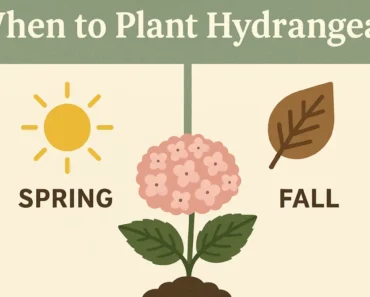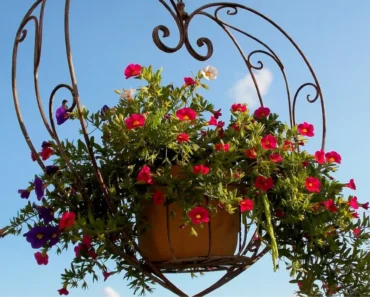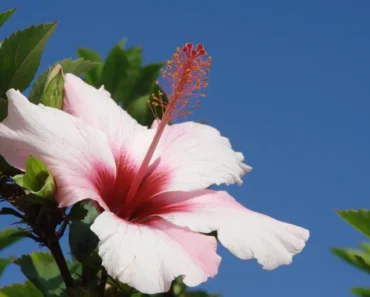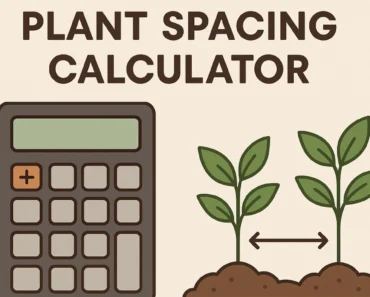
June marks the beginning of peak summer growing season, offering gardeners incredible opportunities to establish thriving gardens. With warm soil temperatures, long daylight hours, and stable weather conditions, June planting provides the perfect foundation for abundant harvests throughout summer and fall. Whether you’re a seasoned gardener or just starting your growing journey, understanding what to plant during this crucial month can transform your garden into a productive paradise.
The success of your June garden largely depends on understanding your specific growing conditions and regional climate. Before diving into planting, it’s essential to check your USDA hardiness zone to determine which crops will thrive in your area. This knowledge helps you make informed decisions about timing and variety selection for optimal results.
Additionally, monitoring local climate and weather data ensures you’re planting at the right time for your specific location. Understanding your area’s average temperatures, rainfall patterns, and frost dates creates the foundation for successful summer planting strategies that maximize your garden’s potential.
Table of Contents
Understanding June Growing Conditions
June growing conditions offer unique advantages that make this month ideal for diverse planting opportunities. Soil temperatures typically range between 60-70°F, creating perfect germination conditions for both warm-season and heat-tolerant crops.
Soil Temperature and Preparation
Proper soil preparation forms the backbone of successful June planting:
• Temperature monitoring: Soil should consistently reach 60°F or higher for optimal seed germination • Organic matter addition: Incorporate 2-3 inches of compost to improve soil structure and nutrient content
• Drainage enhancement: Ensure proper water movement to prevent root rot in summer heat • pH testing: Most vegetables prefer slightly acidic to neutral soil (6.0-7.0 pH) • Mulching preparation: Ready organic mulch materials to conserve moisture and regulate soil temperature
Climate Considerations
June’s extended daylight hours and warming temperatures create ideal conditions for:
• Heat-loving crops: Tomatoes, peppers, and squash thrive in June’s warming soil • Quick-growing vegetables: Radishes and lettuce can still succeed with proper variety selection • Long-season planning: Brussels sprouts and cabbage planted now mature perfectly for fall harvest • Regional variations: Northern gardeners can finally plant tender crops, while southern gardeners focus on heat-tolerant varieties
Vegetables to Plant in June
June vegetable planting offers remarkable diversity, from quick-maturing crops to long-season varieties that provide fall and winter harvests.
Heat-Loving Warm Season Crops
These warm-season vegetables absolutely thrive when planted in June’s favorable conditions:
Tomatoes • Determinate varieties: Perfect for canning and preserving, these compact plants produce concentrated harvests • Indeterminate types: Provide continuous harvests throughout the growing season until frost • Cherry varieties: Quick-producing and perfect for containers or small spaces • Paste tomatoes: Ideal for sauces and preserving, with meaty texture and concentrated flavor
Peppers • Bell peppers: Sweet varieties in multiple colors, requiring 70-80 days to maturity • Hot peppers: From mild jalapeños to fiery habaneros, adding spice to summer meals • Specialty varieties: Banana peppers, poblanos, and Italian frying peppers for diverse culinary uses
Summer Squash • Zucchini: Prolific producers requiring regular harvesting to maintain production • Yellow squash: Tender, buttery flavor perfect for grilling and summer dishes
• Pattypan varieties: Unique shapes and colors adding visual interest to gardens
Additional Warm-Season Stars • Okra: Extremely heat-tolerant, producing edible pods throughout hot summer months • Bush beans: Quick 50-60 day maturity with continuous harvesting potential • Sweet corn: Plant successive rows every two weeks for extended harvest period
Quick-Growing Cool Season Succession Crops
Strategic succession planting of these crops ensures continuous harvests:
• Heat-resistant lettuce: Varieties like ‘Jericho’ and ‘Nevada’ tolerate summer heat better than spring types • Radishes: Fast 30-day maturity makes them perfect for filling garden gaps • Swiss chard: Colorful stems and heat tolerance provide both beauty and nutrition • Spinach: Bolt-resistant varieties like ‘Space’ and ‘Bloomsdale’ handle June heat • Baby carrots: Quick-maturing varieties for summer snacking and salads
Long-Season Crops for Fall Harvest
Planting these vegetables in June ensures perfect fall and winter harvests:
• Brussels sprouts: Require 90-120 days, making June planting ideal for autumn harvest • Late cabbage: Dense heads developing during cooler fall temperatures • Cauliflower: Heat-tolerant varieties producing beautiful heads as temperatures cool • Fall broccoli: Superior flavor when grown during cooler weather • Winter kale: Cold-hardy varieties becoming sweeter after frost exposure
Herbs to Plant in June
June herb planting establishes aromatic gardens that enhance cooking and provide natural pest control benefits throughout the growing season.
Annual Herbs
These annual herbs provide immediate gratification and continuous harvests:
Basil Varieties • Sweet basil: Classic Italian variety perfect for pesto, sauces, and fresh eating • Purple basil: Ornamental value with identical flavor profiles to green varieties • Thai basil: Spicier flavor perfect for Asian cuisine and unique culinary applications • Lemon basil: Citrusy notes adding brightness to summer dishes and beverages
Quick-Growing Favorites • Cilantro: Succession plant every 2-3 weeks for continuous harvests before bolting • Dill: Both feathery leaves and aromatic seeds provide culinary versatility • Parsley: Flat-leaf varieties offer superior flavor, while curly types provide garnish appeal • Chives: Mild onion flavor with beautiful purple flowers attracting beneficial insects
Perennial Herbs
Perennial herb investments provide years of harvests with minimal maintenance:
Mediterranean Classics • Oregano: Heat-loving herb establishing strong root systems during summer months • Thyme: Multiple varieties offering different flavors from lemon to traditional earthy notes • Sage: Silvery foliage and robust flavor perfect for meat dishes and preservation • Rosemary: Evergreen herb providing year-round harvests in mild climates
Additional Perennial Options • Lavender: Fragrant flowers and foliage with natural pest-deterrent properties • Mint: Vigorous growers requiring container cultivation to prevent spreading • Tarragon: French variety providing sophisticated flavor for culinary applications
Flowers to Plant in June
June flower planting creates spectacular summer displays while supporting pollinators and beneficial insects throughout the growing season.
Annual Flowers for Summer Color
These summer annuals provide immediate impact and continuous blooms:
Heat-Tolerant Champions • Marigolds: Natural pest deterrents protecting vegetable gardens while providing bright orange and yellow blooms • Zinnias: Available in numerous colors and sizes, attracting butterflies and beneficial insects • Sunflowers: From dwarf varieties to giants, providing seeds for wildlife and dramatic garden focal points • Cosmos: Delicate appearance belies incredible drought tolerance and self-seeding capabilities
Versatile Garden Performers • Nasturtiums: Edible flowers with peppery flavor, natural pest control, and climbing capabilities • Impatiens: Shade-tolerant options for difficult garden areas with continuous blooming • Petunias: Heat-loving trailers perfect for containers and hanging baskets • Portulaca: Succulent flowers thriving in hot, dry conditions where other plants struggle
Perennial Flowers for Long-term Beauty
Perennial flower investments establish permanent garden structure with increasing beauty each year:
Native Plant Powerhouses • Coneflowers (Echinacea): Purple, white, and yellow varieties attracting goldfinches and butterflies • Black-eyed Susans: Drought-tolerant natives providing late-summer golden blooms • Bee Balm: Fragrant flowers in red, pink, and purple attracting hummingbirds and bees • Wild Bergamot: Native alternative with similar pollinator benefits and natural pest control
Garden Workhorses • Daylilies: Virtually maintenance-free with extended blooming periods and diverse colors • Salvia: Heat-tolerant spikes in blue, purple, red, and white attracting hummingbirds consistently • Sedum: Succulent varieties providing late-season blooms and winter garden structure • Rudbeckia: Extended blooming period with natural self-seeding for expanding colonies
Fruits to Plant in June
June fruit planting establishes productive plants that provide fresh harvests for years to come with proper care and maintenance.
Berry Plants and Small Fruits
Strawberry Varieties • June-bearing: Traditional varieties producing large harvests over 2-3 week periods • Everbearing: Smaller but continuous harvests throughout the growing season • Day-neutral: Consistent production regardless of daylight length variations
Bush Berry Options
• Blueberry bushes: Requiring acidic soil conditions but providing decades of antioxidant-rich harvests • Raspberry canes: Summer-bearing and fall-bearing varieties extending harvest seasons significantly • Blackberry varieties: Thornless cultivars reducing maintenance while maximizing fruit production
Warm-Season Fruit Crops
Summer fruit crops planted in June take advantage of warm soil and extended growing seasons:
• Watermelons: Requiring 90-120 days, June planting ensures perfect late-summer harvest timing • Cantaloupes: Sweet melons developing optimal flavor during hot summer conditions
• Specialty melons: Honeydew and exotic varieties adding diversity to summer fruit harvests • Grape vines: Long-term investments requiring proper support systems and patience for establishment
Regional Planting Considerations
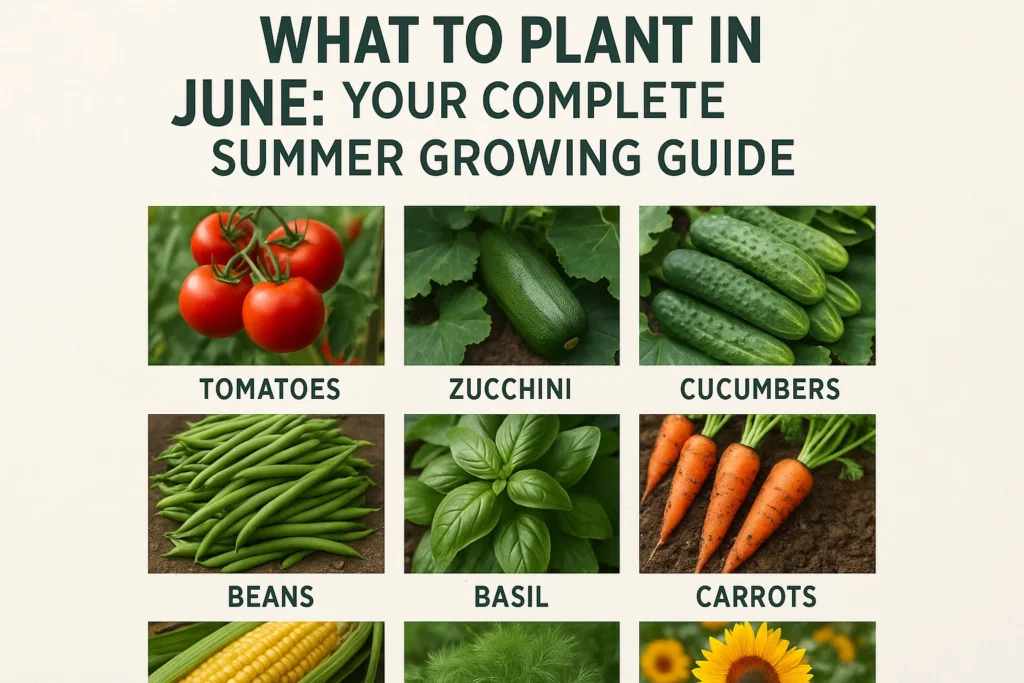
Understanding regional growing differences ensures appropriate variety selection and timing for your specific location and climate conditions.
Northern Regions (Zones 3-5)
Northern gardeners can finally embrace warm-season planting in June:
• Extended frost protection: Keep row covers ready for unexpected late cold snaps • Season extension: Utilize greenhouses, cold frames, and tunnel systems for maximum growing time
• Variety selection: Choose early-maturing varieties to ensure harvest before fall frost • Soil warming: Use black plastic mulch to accelerate soil warming for heat-loving crops
Southern Regions (Zones 8-10)
Southern gardeners focus on heat management and fall preparation:
• Afternoon shade: Provide protection during intense midday heat for sensitive crops • Heat-tolerant varieties: Select cultivars specifically bred for extreme heat tolerance • Fall planting prep: Begin planning and preparing for autumn and winter growing seasons • Water management: Implement efficient irrigation systems for consistent moisture delivery
Transitional Zones (Zones 6-7)
Mid-region gardeners enjoy the most diverse planting opportunities:
• Extended seasons: Take advantage of longer growing periods for both cool and warm crops • Succession strategies: Plant multiple varieties with different maturation times • Weather monitoring: Stay alert to variable weather patterns requiring flexible management • Variety experimentation: Try both northern and southern varieties to determine best performers
June Planting Tips and Best Practices
Successful June gardening requires specific strategies addressing summer’s unique challenges and opportunities for optimal plant establishment and growth.
Timing and Scheduling
Early June Strategies • Warm-season transplants: Perfect timing for tomatoes, peppers, and other heat-loving crops • Direct seeding: Beans, squash, and corn germinate rapidly in warm June soil • Last cool-season: Final opportunity for heat-tolerant lettuce and quick-growing radishes
Late June Considerations
• Fall crop planning: Begin Brussels sprouts, cabbage, and other long-season vegetables • Succession planting: Continue beans, lettuce, and herbs for extended harvests • Heat protection: Provide afternoon shade for newly planted seedlings
Watering and Maintenance
Proper watering becomes critical as temperatures rise and plants establish root systems:
• Deep watering: Apply 1-2 inches weekly, watering deeply but less frequently • Morning irrigation: Water early to reduce evaporation and prevent fungal diseases • Mulching benefits: Apply 2-3 inches of organic mulch to conserve moisture and regulate soil temperature • Drip irrigation: Consider efficient watering systems for consistent moisture delivery without waste
Pest and Disease Management
Integrated pest management prevents problems before they become serious garden threats:
• Beneficial insect habitat: Plant diverse flowers to attract natural predators and pollinators • Companion planting: Use marigolds, nasturtiums, and herbs for natural pest deterrence
• Regular monitoring: Check plants weekly for early problem identification and intervention • Organic controls: Implement beneficial nematodes, row covers, and natural sprays when necessary
Common Mistakes to Avoid When Planting in June
Avoiding these common planting errors ensures better success rates and healthier plants throughout the growing season.
• Poor timing decisions: Planting heat-sensitive crops too late in the month when temperatures soar • Inadequate soil preparation: Skipping soil amendment and testing leads to poor plant performance • Shallow watering habits: Daily light watering creates weak root systems unable to handle heat stress
• Overcrowding plants: Ignoring spacing requirements reduces air circulation and increases disease pressure • Missing support systems: Failing to install tomato cages, bean poles, and trellises at planting time
Frequently Asked Questions
Q: Is it too late to plant tomatoes in June?
June is actually ideal timing for tomato planting in most regions. Warm soil temperatures and eliminated frost risk create perfect conditions for rapid establishment and growth. Choose determinate varieties for quicker harvests or indeterminate types for season-long production.
Q: What vegetables grow fastest when planted in June?
Quick-growing vegetables perfect for June planting include radishes (30 days), lettuce varieties (45-60 days), and bush beans (50-60 days). These crops take advantage of warm soil while maturing before peak summer heat becomes problematic.
Q: Can I plant cool-season crops in June?
Yes, but success requires selecting heat-resistant varieties and providing afternoon shade protection. Consider succession planting every 2-3 weeks for continuous harvests, and focus on baby leaf varieties that mature quickly.
Q: How often should I water newly planted June crops?
Deep watering 2-3 times per week proves more effective than daily shallow watering. Apply 1-2 inches weekly, adjusting based on rainfall, temperature, and plant establishment progress. Morning watering reduces evaporation and disease risk.
Q: What flowers bloom quickly when planted in June?
Fast-blooming flowers include marigolds, zinnias, and cosmos, which germinate quickly and bloom within 6-8 weeks of planting. These heat-tolerant annuals provide immediate garden color while attracting beneficial insects.
Q: Should I use mulch for June plantings?
Absolutely! Mulching benefits include moisture retention, soil temperature regulation, and weed suppression during hot summer months. Apply 2-3 inches of organic mulch around plants, keeping material away from plant stems.
Q: Can I direct sow seeds in June or should I use transplants?
Both methods work excellently in June. Direct sowing succeeds with beans, squash, corn, and most flowers, while transplants give heat-sensitive crops like tomatoes and peppers a strong head start for better establishment.
Conclusion: Making the Most of June Planting
June represents the pinnacle of growing season opportunities, offering gardeners the perfect combination of warm soil, stable weather, and extended daylight hours. Whether you’re establishing heat-loving vegetables, aromatic herb gardens, or colorful flower displays, this crucial month sets the foundation for abundant harvests and beautiful landscapes throughout summer and fall.
Success in June gardening comes from understanding your specific regional conditions, selecting appropriate varieties, and implementing proper planting techniques. Start with a few easy crops like beans, marigolds, or herbs to build confidence, then gradually expand your garden’s diversity as your skills develop.
Remember to consider professional soil testing services for optimal soil preparation, and always account for your specific hardiness zone when making planting decisions. With proper planning and execution, your June garden will reward you with months of fresh produce, stunning blooms, and the satisfaction of successful growing throughout the season.
Author
George Wine is a seasoned gardening expert with over 20 years of experience in the field of horticulture. His passion for plants and nature has driven his career, where he has honed his skills in various aspects of gardening, from landscape design to plant care. George holds a Master of Science in Horticulture from the University of California, Davis (UC Davis), a prestigious institution known for its research and advancements in plant science.
Throughout his career, George has worked with a diverse range of clients, offering tailored solutions to enhance outdoor spaces and create thriving gardens. His knowledge and expertise allow him to provide invaluable advice, ensuring that both novice and experienced gardeners achieve their gardening goals. Whether you’re looking for tips on sustainable gardening practices, innovative design ideas, or advice on specific plant species, George is here to help you cultivate the garden of your dreams.

